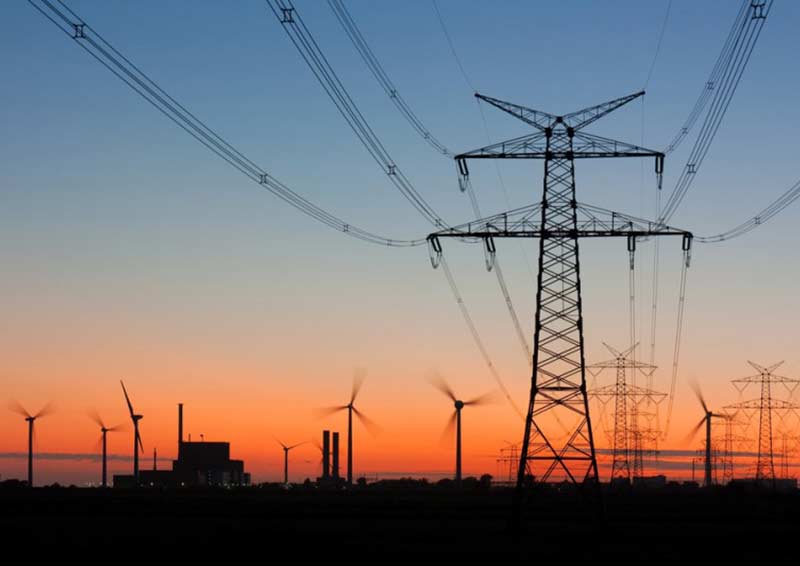Municipal energy - briefing sheet
In February 2017, the Institution of Civil Engineers (ICE) published a briefing sheet focusing on municipal energy transmission, retailing, and legislation, associated issues and the role of local authorities in energy distribution.
Councils are increasingly taking a lead role in the municipalisation of energy by implementing innovative energy schemes to reduce costs, provide value for money, generate income and address fuel poverty.
The briefing paper provides an overview of some of the issues associated with municipal energy and focuses on the UK, with its unique history relating to energy transmission, retailing and legislation.
The transmission of electricity is not a straightforward process and the transmission network can become constrained by a number of factors such as voltage issues, thermal issues, fault levels, power quality and reverse power flow. The situation is complicated by energy now also being distributed locally and entering the grid at a variety of different levels and at different scales.
Some of these network constraints are being addressed through the evolution of smart grids which employ communications, innovative products and services together with intelligent monitoring and control technologies. The timescale for and cost of grid connections are a major issue for businesses.
However, the difficulty of obtaining a grid connection has led to the creation of innovative solutions. One such solution for The Museum of Liverpool - which essentially is located on an island, cut off from the mainland by water, docks and a canal - was to create a tri-generation energy centre that provides heat, electricity and cooling.
The briefing paper provides an introduction to the role local authorities have played with regard to the distribution of energy and their current interests in this agenda around both infrastructure and energy retailing.
Many councils such as Peterborough, Nottingham and Liverpool are using innovative solutions and developing renewable energy alternatives to fossil fuels. By doing this, they are delivering value for money for local council tax-payers, generating income and addressing fuel poverty through reduced energy bills for residents.
The document provides information on:
- Generation and transmission.
- Grid connections.
- Utility companies.
- Municipal energy companies.
- Other sources of renewable energy.
- Balancing and trading.
- Drivers for change.
- Demand and storage.
It also contains links to case studies including:
To download the briefing sheet, go here.
This article was originally published on 15 Feb 2017 by ICE. It was written by Rabinder Phull.
--The Institution of Civil Engineers
[edit] Related articles on Designing Buildings Wiki
- A technical guide to district heating (FB 72).
- Articles by ICE on Designing Buildings Wiki.
- Big growth in district heating markets - now and on the horizon.
- Combined heat and power.
- Community energy network.
- District energy networks.
- DC electricity networks.
- Heat sharing network.
- National heat map.
- The Future of Electricity in Domestic Buildings.
Featured articles and news
The UK's Modern Industrial Strategy: A 10 year plan
Previous consultation criticism, current key elements and general support with some persisting reservations.
Building Safety Regulator reforms
New roles, new staff and a new fast track service pave the way for a single construction regulator.
Architectural Technologist CPDs and Communications
CIAT CPD… and how you can do it!
Cooling centres and cool spaces
Managing extreme heat in cities by directing the public to places for heat stress relief and water sources.
Winter gardens: A brief history and warm variations
Extending the season with glass in different forms and terms.
Restoring Great Yarmouth's Winter Gardens
Transforming one of the least sustainable constructions imaginable.
Construction Skills Mission Board launch sector drive
Newly formed government and industry collaboration set strategy for recruiting an additional 100,000 construction workers a year.
New Architects Code comes into effect in September 2025
ARB Architects Code of Conduct and Practice available with ongoing consultation regarding guidance.
Welsh Skills Body (Medr) launches ambitious plan
The new skills body brings together funding and regulation of tertiary education and research for the devolved nation.
Paul Gandy FCIOB announced as next CIOB President
Former Tilbury Douglas CEO takes helm.
UK Infrastructure: A 10 Year Strategy. In brief with reactions
With the National Infrastructure and Service Transformation Authority (NISTA).
Ebenezer Howard: inventor of the garden city. Book review.
The Grenfell Tower fire, eight years on
A time to pause and reflect as Dubai tower block fire reported just before anniversary.
Airtightness Topic Guide BSRIA TG 27/2025
Explaining the basics of airtightness, what it is, why it's important, when it's required and how it's carried out.
Construction contract awards hit lowest point of 2025
Plummeting for second consecutive month, intensifying concerns for housing and infrastructure goals.
Understanding Mental Health in the Built Environment 2025
Examining the state of mental health in construction, shedding light on levels of stress, anxiety and depression.























